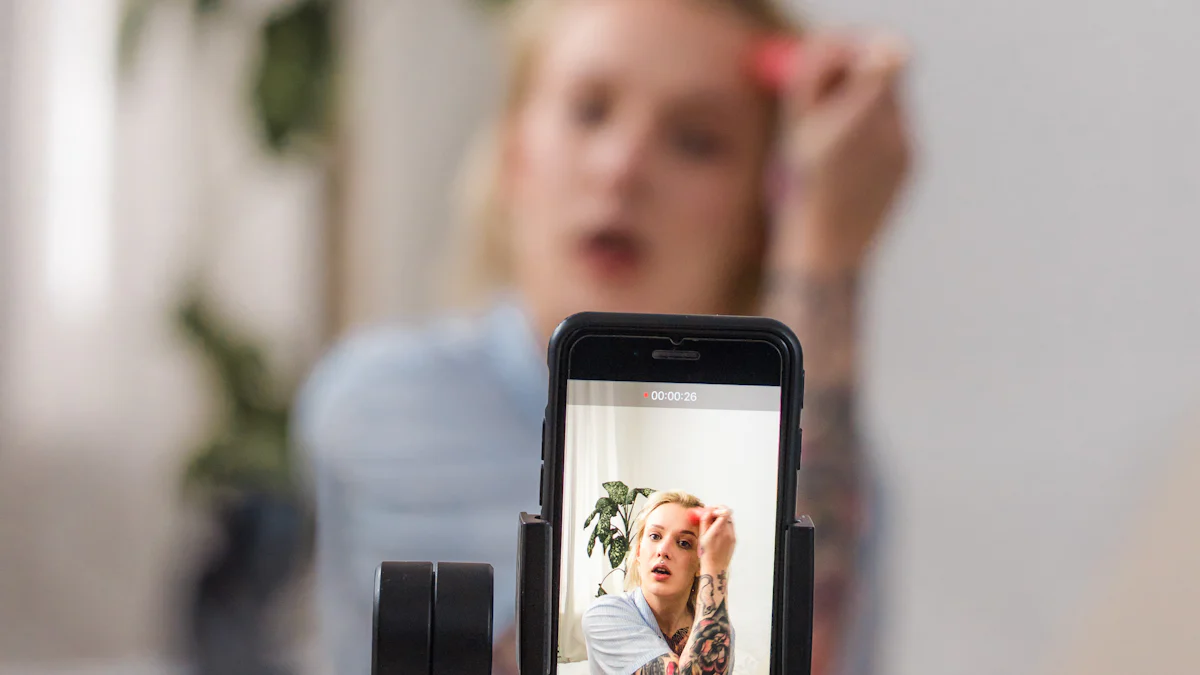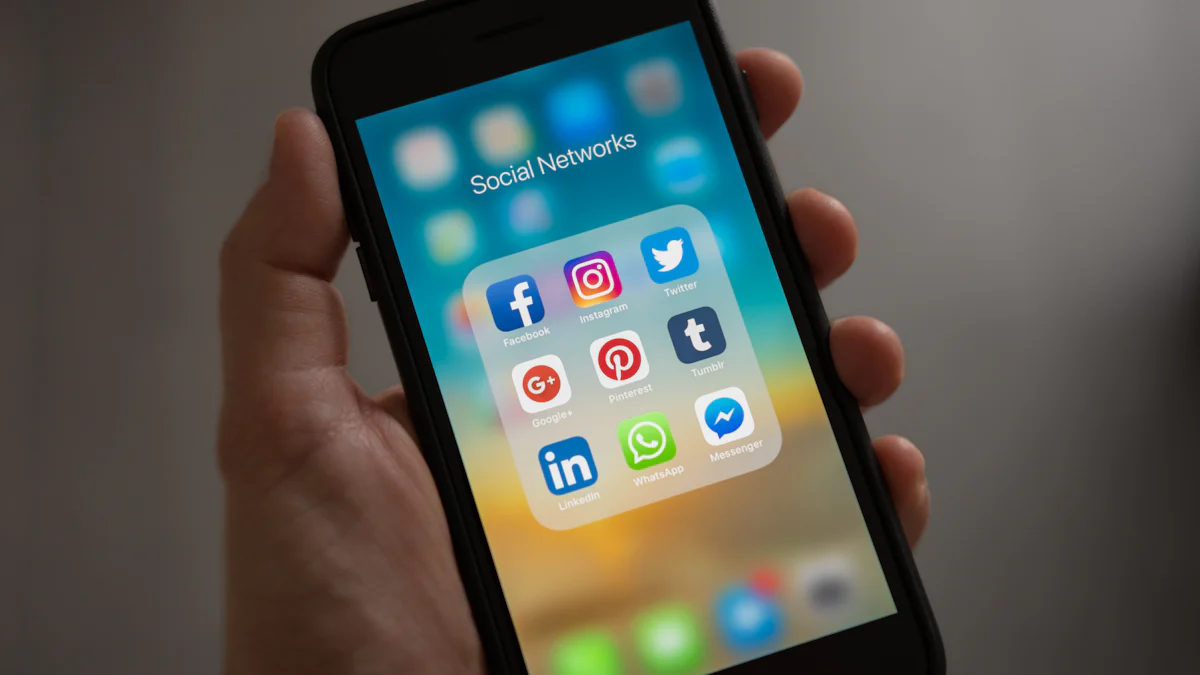How Influencer Marketing Works for Brands in 2025

In 2025, influencer marketing has become a game-changer for brands like yours. It’s not just about flashy ads anymore. Instead, it’s about connecting with your audience in ways that feel personal and authentic. Did you know that brands are projected to spend $9.29 billion on influencer marketing this year? That’s a 14.2% jump from 2024! This growth shows how much brands value the power of influencers to drive results.
Platforms like TikTok and Instagram are evolving too. TikTok’s search feature now helps users discover products faster, while Instagram prioritizes shareable content. These changes make it easier for you to reach your audience through influencers who feel relatable and trustworthy. Micro-influencers, for example, are leading the way with their smaller, niche followings. They’re not just promoting products—they’re building real connections that drive engagement and conversions.
So, how does influencer marketing work in this new era? It’s all about authenticity, community, and using the right influencers to tell your brand’s story.
Evolving Trends in Influencer Marketing

The Rise of Niche Influencers
Micro and nano influencers as key players
In 2025, micro and nano influencers are stealing the spotlight. These influencers, with smaller but highly engaged followings, are helping brands connect with their target audience on a deeper level. Why? Because their content feels more personal and relatable. You’re not just seeing a product; you’re seeing how it fits into someone’s real life. Studies show that 61% of people have purchased something based on an influencer’s recommendation in the past six months. That’s the power of authenticity!
Brands are also inviting their top customers to events alongside influencers. This democratized approach creates a sense of community and trust, making your audience feel like they’re part of something bigger.
Hyper-targeted audience engagement
Micro and nano influencers excel at hyper-targeted engagement. They focus on niche topics, whether it’s sustainable fashion or tech gadgets, ensuring your marketing efforts reach the right people. This strategy works wonders for brands looking to connect with specific demographics. Plus, 85% of followers say they’d unfollow influencers who seem inauthentic, so choosing influencers who align with your values is key.
Multichannel Campaigns
Utilizing platforms like TikTok, Instagram, and emerging apps
TikTok is still a game-changer in 2025. Its short, viral content keeps users hooked, making it perfect for quick product promotions. Instagram, on the other hand, remains the go-to for visual storytelling. Emerging apps are also gaining traction, offering new ways to engage your audience. By combining these platforms, you can amplify your brand’s visibility both online and offline.
Cross-platform influencer strategies
Successful campaigns often span multiple platforms. For example:
| Platform | Example Campaigns | Strategy Type |
|---|---|---|
| TikTok | Last Crumb, Google x Samsung | Quick, viral moments |
| Daniel Wellington, Touchland | Visual lifestyle content | |
| YouTube | NordVPN, Balvenie | Deeper storytelling |
These strategies allow you to reach different audiences while maintaining a consistent message. Shared media platforms encourage content sharing, while owned media like your website provides a controlled space to engage your audience further.
Long-term Collaborations
Building authentic influencer relationships
One-off campaigns are fading. Long-term influencer partnerships are the future. They foster genuine relationships, making influencers more credible when promoting your brand. Tech giants like Google and Microsoft have embraced this model, collaborating with influencers for ongoing campaigns.
Transitioning from one-off campaigns to sustained partnerships
Sustained partnerships offer more than just authenticity. They help you build trust, boost brand awareness, and even shorten the sales cycle. Sony, for instance, has partnered with photographers and YouTubers over the years, integrating its products into their daily work. This approach creates emotional connections and loyalty among audiences.
By focusing on long-term collaborations, you gain valuable insights into your audience’s preferences, helping you refine your marketing strategies.
How Technology Shapes Influencer Marketing

AI-Driven Influencer Selection
Identifying the right influencers with AI
Finding the perfect influencer for your brand can feel overwhelming, but AI makes it a breeze. It evaluates influencers based on audience demographics, content performance, and authenticity. This ensures you’re connecting with someone who truly aligns with your brand. AI also detects fake followers and inflated engagement rates, so you avoid wasting resources on unreliable partnerships.
AI tools can spot potential fraud in influencer metrics, helping you focus on genuine collaborations that deliver real results.
Predicting campaign outcomes using data
AI doesn’t just help you choose influencers—it predicts how well your campaigns will perform. Tools like BWF’s Donor AI service use data science to forecast outcomes and optimize strategies. Whether you’re targeting healthcare donors or alumni, predictive AI ensures your efforts hit the mark.
Automation in Campaign Management
Streamlining processes with AI tools
Automation saves you time by handling repetitive tasks like influencer outreach and content approvals. It schedules posts and sends bulk messages, freeing you up to focus on strategy. Automated systems also analyze historical data to identify the most effective influencers for your campaigns.
Real-time performance tracking and adjustments
With automation, you can monitor your campaigns in real time. If something isn’t working, you can tweak your strategy on the fly. Real-time analytics provide up-to-the-minute data, helping you make informed decisions. Plus, visual tools like charts simplify performance tracking, making it easier to share insights with your team.
Virtual Influencers and the Metaverse
The emergence of AI-generated influencers
Virtual influencers are taking over social media. These AI-powered personalities engage audiences with tailored content, offering brands complete control over messaging. A survey found that 58% of users already follow at least one virtual influencer.
Engaging audiences in virtual environments
Virtual environments like AR and VR are transforming influencer marketing. Imagine testing a product virtually before buying it. AI-powered influencers can even host live Q&A sessions, offering personalized recommendations. This creates a deeper connection between your brand and its audience.
Shifts in Consumer Behavior
Search-Based Discovery
Social media as a search engine for products
In 2025, social media isn’t just for scrolling—it’s where people search for products. Platforms like TikTok and Instagram have evolved into powerful search engines. Users type in keywords to find reviews, tutorials, and recommendations. This shift means your audience is actively looking for solutions, and influencers are the ones guiding them.
When influencers showcase products, they act as trusted advisors. They provide reassurance by positioning themselves as experts. Their testimonials and reviews create a ripple effect, encouraging others to follow their lead.
Influencers as key drivers of product discovery
Influencers play a huge role in helping people discover new products. Here’s how they do it:
- They focus on specific niches, building authority in areas like fitness, beauty, or tech.
- Their authenticity makes their recommendations feel genuine.
- Long-term collaborations with brands build trust over time.
By working with influencers who align with your brand, you can tap into this discovery process and connect with your audience in meaningful ways.
Community-Driven Engagement
Building and nurturing online communities
A strong community can make or break your marketing efforts. People want to feel like they’re part of something bigger. Successful strategies include making events accessible, offering personalized interactions, and using technology to remove barriers like childcare or transportation.
| Strategy | Description |
|---|---|
| Accessibility | Ensure event spaces are easy to reach or offer virtual options. |
| Personalized Engagement | Host one-on-one sessions to foster deeper connections. |
| Low-pressure Events | Create casual, welcoming environments for participation. |
| Technology Use | Use tools like Zoom to increase participation flexibility. |
| Addressing Barriers | Provide childcare, stipends, or translation services to encourage inclusion. |
Influencers as trust-builders and community leaders
Influencers excel at creating authentic spaces where people feel valued. They spark conversations, encourage participation, and foster a sense of belonging. Their personal touch makes your community feel less like a marketing strategy and more like a genuine gathering.
Demand for Authenticity
The value of genuine, relatable content
Your audience craves authenticity. They want influencers who share real stories, not just polished ads. Data-driven tools now help brands verify influencer authenticity by analyzing engagement rates and audience demographics. Genuine partnerships and honest storytelling resonate deeply, making your marketing efforts more impactful.
Transparency's role in shaping brand perception
Transparency is non-negotiable in 2025. Consumers demand ethical practices and open communication. Brands like Patagonia and Everlane have set the standard by being upfront about their supply chains. When you’re transparent, you build trust and loyalty, which are essential for long-term success.
Benefits of Influencer Marketing for Brands
Enhanced Engagement
Driving higher interaction rates through influencers
Influencers are experts at sparking conversations and driving user engagement. When they share your products, their followers respond with likes, comments, and shares. This ripple effect amplifies your brand’s visibility and creates a buzz around your offerings. Metrics like audience growth and website traffic from social media show how well influencer marketing works.
| Metric | Description |
|---|---|
| Audience engagement | Measures likes, shares, and comments to assess how well an influencer resonates with their audience. |
| Audience growth | Indicates an increase in social media followers due to influencer collaborations, amplifying brand reach. |
| Brand mentions | Tracks how often a brand is discussed on social media, indicating genuine engagement and word-of-mouth marketing. |
| Social media share of voice | Compares brand presence to competitors, helping gauge market-wide effectiveness of influencer campaigns. |
| Website traffic from social media | Links social media activities to website visits, showcasing the impact of influencer campaigns on potential customers. |
| Conversions | Measures successful completion of goals, indicating audience influence by the collaboration. |
| Revenue | Calculates revenue generated by influencer campaigns to measure return on investment (ROI). |
Storytelling as a tool for audience connection
Storytelling is the secret sauce that makes influencer marketing so effective. Influencers don’t just promote products—they tell stories that resonate with their followers. A good story can evoke emotions like joy, nostalgia, or empathy. It humanizes your brand and builds trust.
- Storytelling creates deeper emotional connections with followers.
- It engages and humanizes both the brand and the influencer.
- This approach fosters trust and loyalty, enhancing marketing effectiveness.
- Narratives capture attention and inspire action, driving engagement.
- Storytelling showcases brand values and personality in a relatable manner.
When influencers share their personal experiences with your products, it feels authentic. This authenticity strengthens the bond between your brand and its target audience.
Precise Targeting
Reaching specific demographics effectively
Influencer marketing allows you to reach the exact audience you want. By partnering with influencers who specialize in niches like fitness, beauty, or e-commerce, you can connect with people who are already interested in your products. This hyper-targeted approach ensures your marketing efforts hit the mark.
Personalization through influencer alignment
Personalization is key to successful campaigns. Aligning with the right influencers ensures your message feels genuine.
- Segment influencers based on their niche, interests, or engagement levels.
- Research their audience to ensure it matches your target market.
- Build genuine relationships by engaging with their content.
A great example is the partnership between Charli D’Amelio and Dunkin’ Donuts. By aligning with her relatable brand voice, Dunkin’ reached her massive following and reinforced its identity. This collaboration resonated with her audience and expanded Dunkin’s customer base.
Improved ROI
Measuring cost-effectiveness and campaign success
Influencer marketing delivers impressive ROI by combining authenticity with reach. Metrics like conversions and revenue help you measure success. For example, AboutYou used influencer collaborations to boost revenue, while Butternut Box transformed from a startup to a global brand through influencer strategies.
| Brand | Strategy Description | ROI Outcome |
|---|---|---|
| AboutYou | Leveraged influencer collaborations to boost revenue. | Significant social media influence ROI. |
| Butternut Box | Transformed from a startup to a global brand through influencer strategy. | High ROI, showcasing the effectiveness of influencer marketing. |
| Scotch & Soda | Multi-channeled approach with various influencers to reach a younger demographic. | Increased follower count and engagement rates, indicating successful campaign ROI. |
| LOOKFANTASTIC | Focused on millennials using micro-influencers for brand reach. | Vast increase in fanbase and sales acceleration, demonstrating effective influencer ROI. |
| ABN AMRO | Promoted local shopping through influencer strategies. | Heightened brand visibility and increased loyalty, showcasing successful influencer ROI. |
Case studies of successful influencer strategies
Real-world examples highlight how brands have achieved success through influencer marketing:
- LOOKFANTASTIC: Increased fanbase and sales through authentic reviews from Instagram followers.
- ABN AMRO: Enhanced brand visibility and loyalty by partnering with macro-influencers to promote local businesses.
- Greenvelope: Engaged 89K users and achieved 180K video views.
- The Smile Generation: Generated 200K engagements with a 3.91% engagement rate.
- eos: Achieved 40M impressions and 1.8M engagements.
These examples show how influencer partnerships can drive results, whether you’re looking to boost sales, grow your audience, or enhance brand loyalty.
In 2025, influencer marketing is your go-to strategy for building trust and driving results. By focusing on authenticity, you’ll connect with audiences who value genuine content. Long-term partnerships with influencers create consistency and foster loyalty, while AI tools help you refine campaigns and maximize ROI. To succeed, tap into niche communities, embrace video content, and align with influencers your audience trusts. Remember, it’s not just about selling—it’s about creating stories that resonate. When you adapt to trends and leverage data, your brand will thrive in this ever-evolving landscape.
FAQ
What is the difference between micro and nano influencers?
Micro influencers typically have 10,000–100,000 followers, while nano influencers have fewer than 10,000. Nano influencers often have closer relationships with their audience, making them great for niche targeting. Micro influencers, on the other hand, balance reach and engagement, offering a broader yet still personal connection.
How do I choose the right influencer for my brand?
Look for influencers whose values align with your brand. Use AI tools to analyze their audience demographics, engagement rates, and authenticity. Check their content style to ensure it matches your brand’s voice. Most importantly, pick someone who genuinely connects with their followers.
Are virtual influencers better than real ones?
It depends on your goals. Virtual influencers offer complete control over messaging and can operate 24/7. However, real influencers bring authenticity and emotional connections. A mix of both can work well, depending on your campaign’s needs and audience preferences.
How can I measure the success of an influencer campaign?
Track metrics like engagement rates, website traffic, and conversions. Use tools to monitor ROI and audience growth. Look at how often your brand gets mentioned online. These numbers show how well your campaign resonates with your target audience.
Is influencer marketing suitable for small businesses?
Absolutely! Micro and nano influencers are affordable and perfect for small businesses. They help you reach specific audiences without breaking the bank. Focus on building long-term relationships with influencers who genuinely love your products.
See Also
Key Influencer Marketing Trends You Should Follow In 2024
15 Essential Influencer Marketing Platforms For Your 2024 Strategy
Effective TikTok Influencer Marketing Techniques To Use In 2024
Decoding The Return On Investment In Influencer Marketing
Exploring TikTok Influencer Marketing: Definition And Functionality
